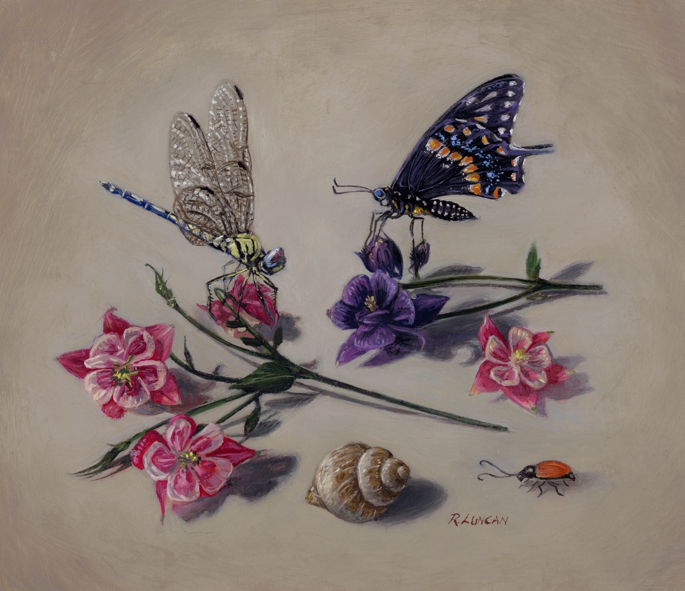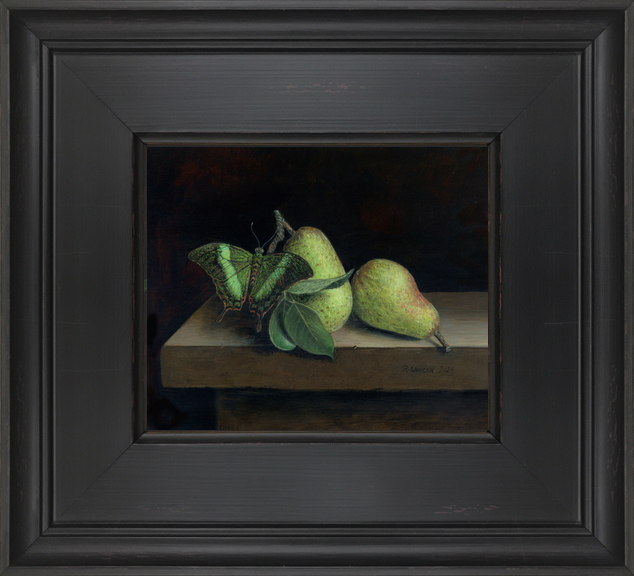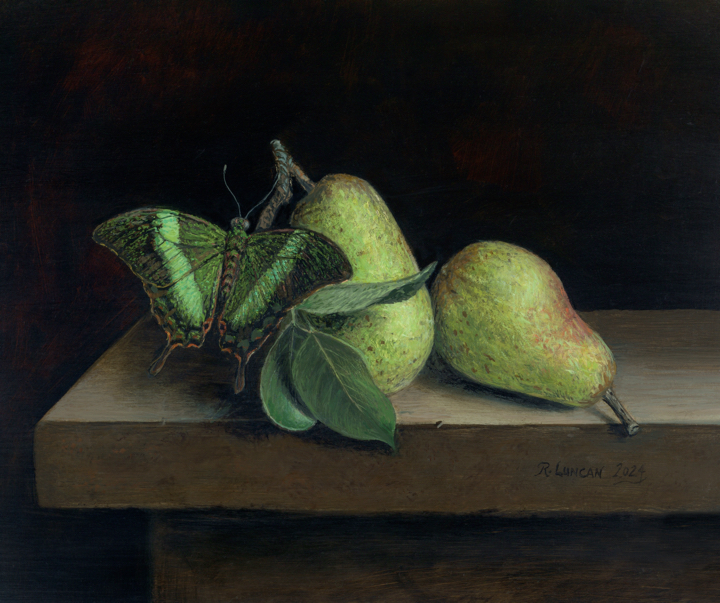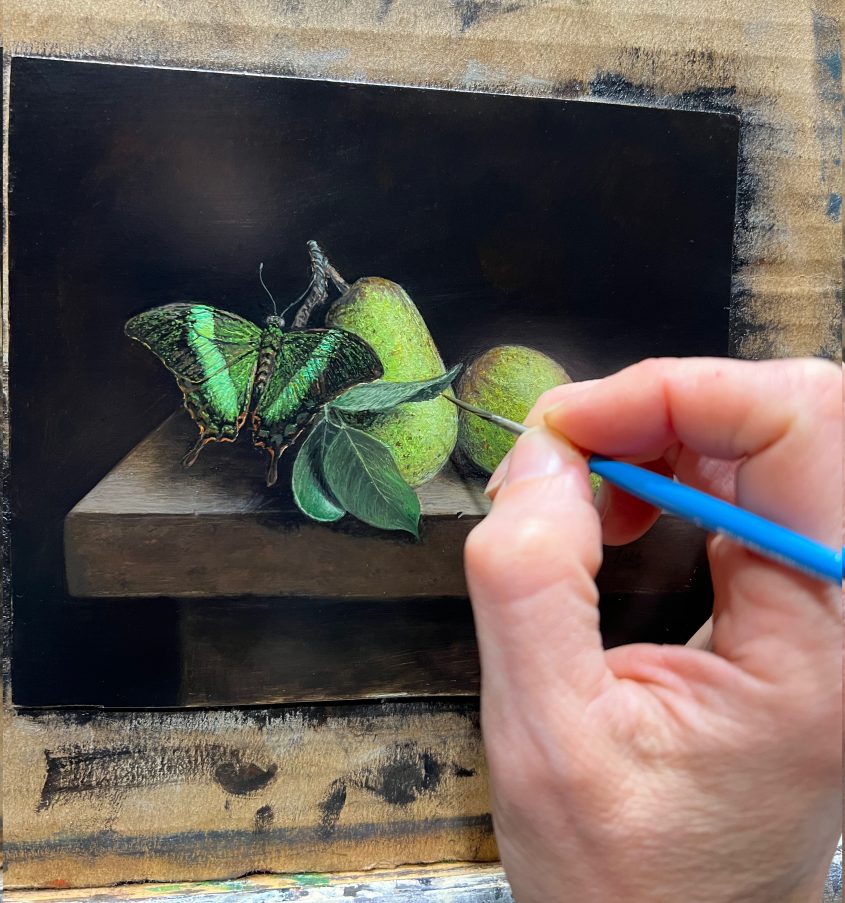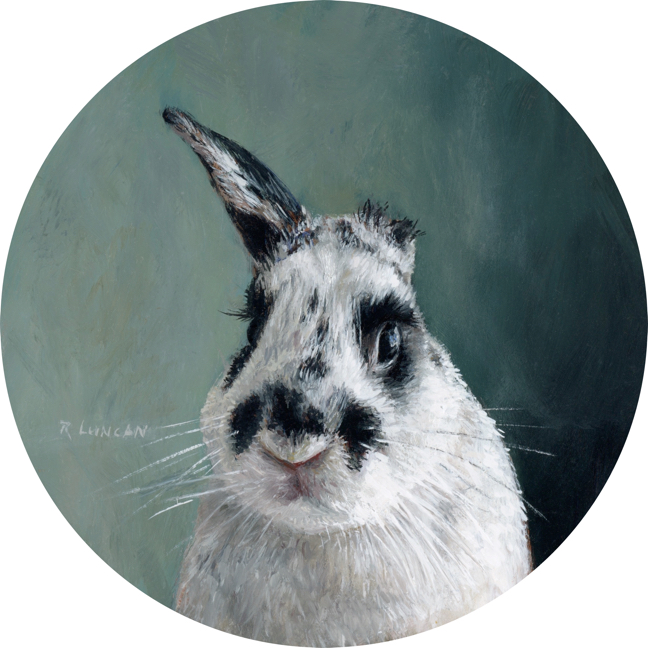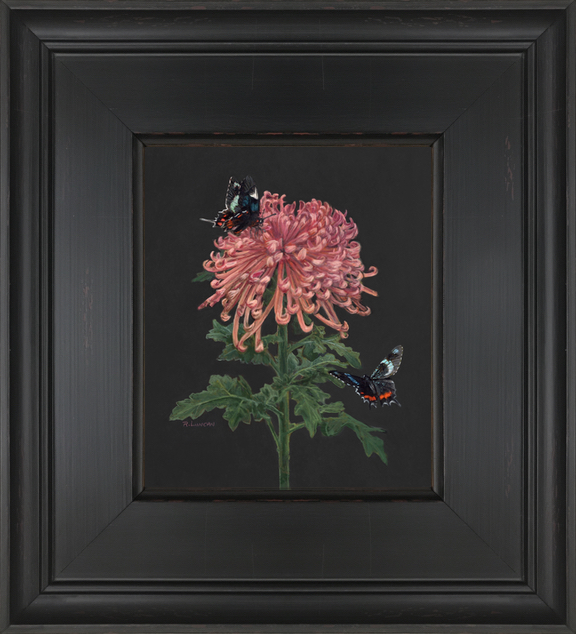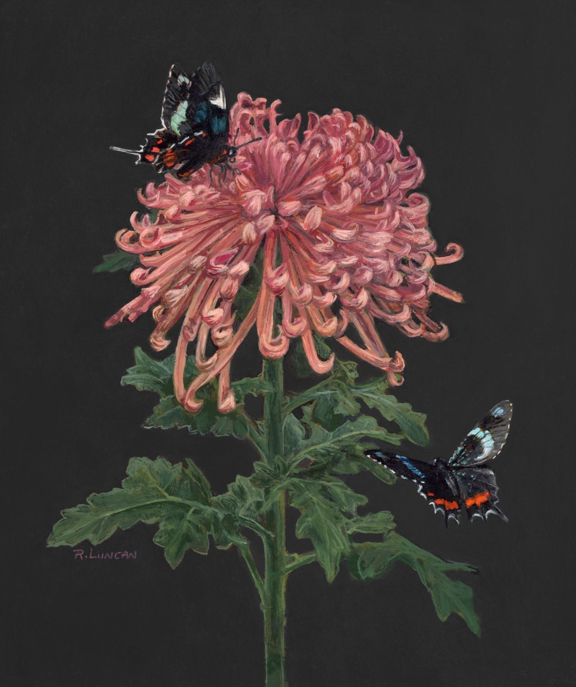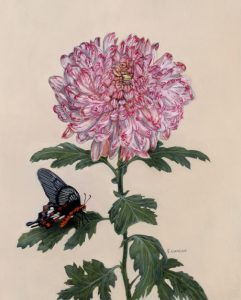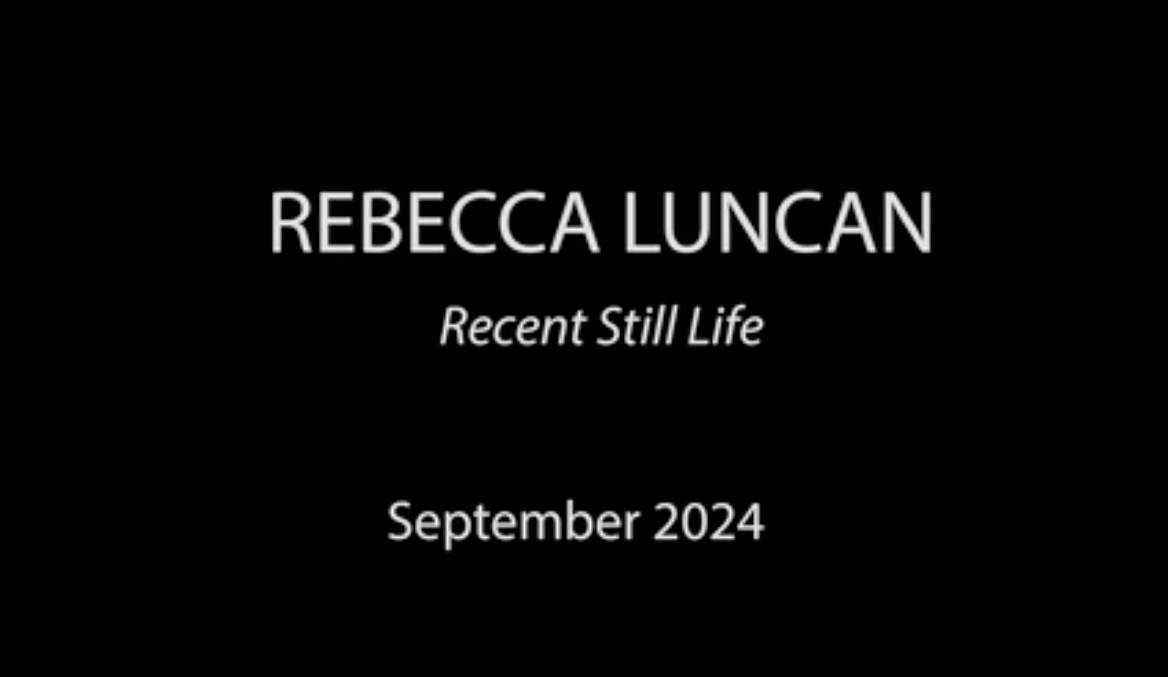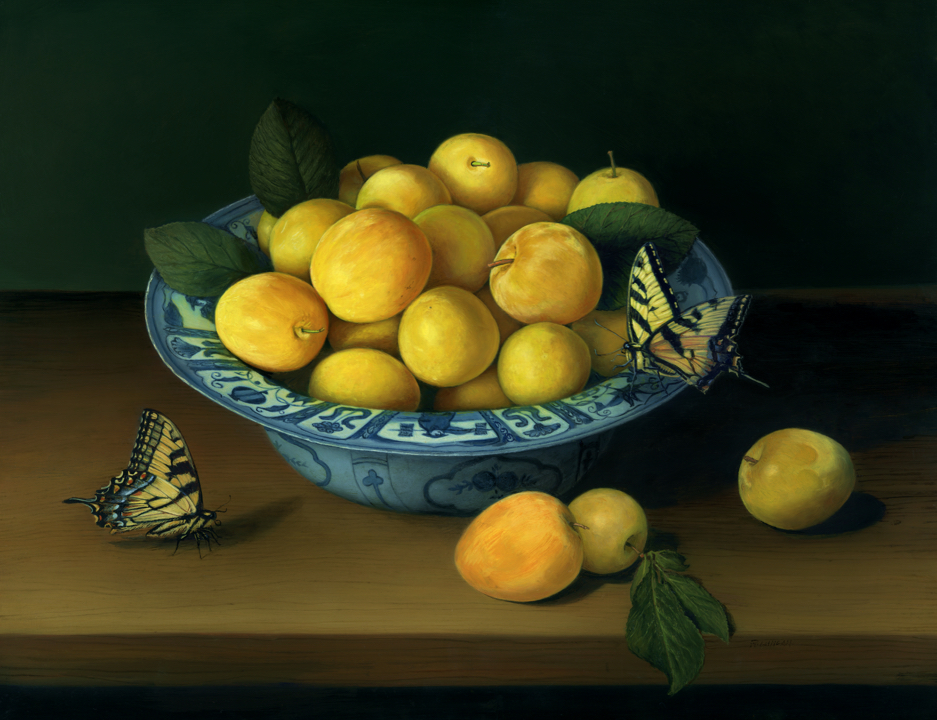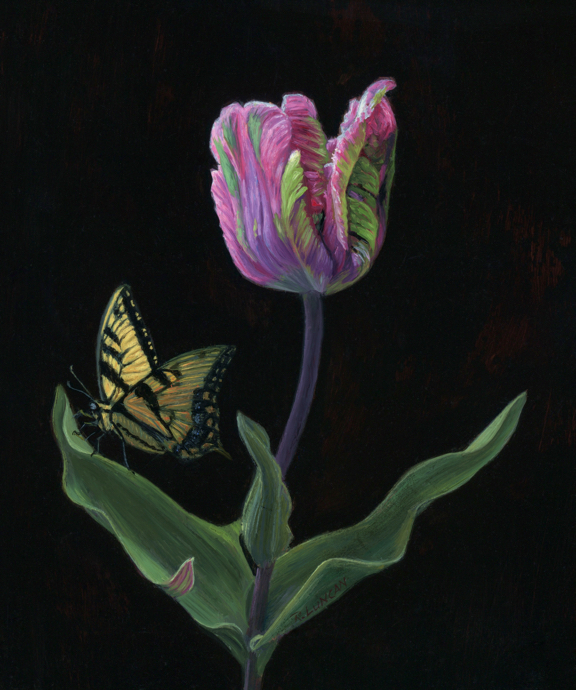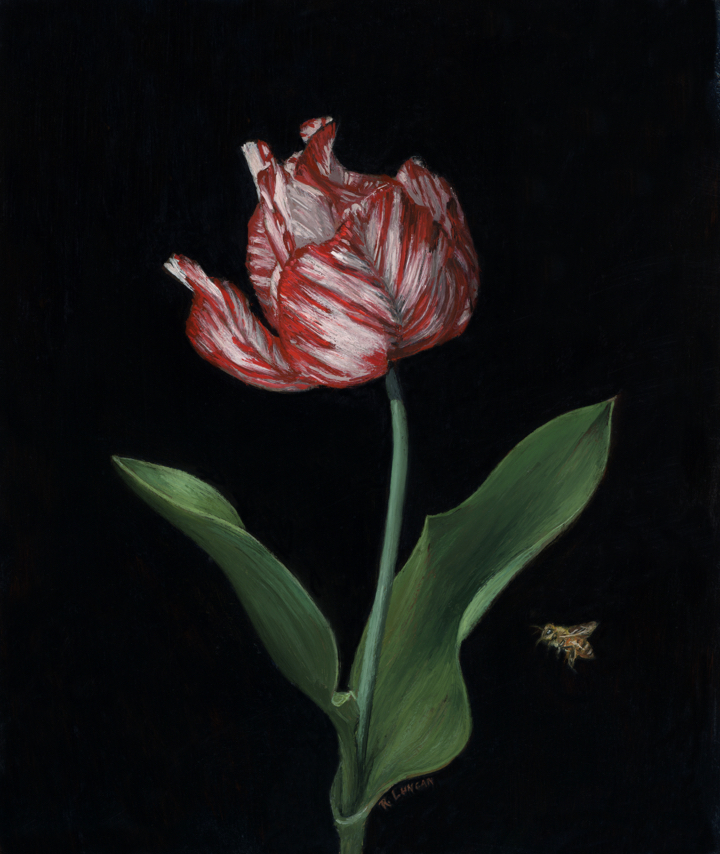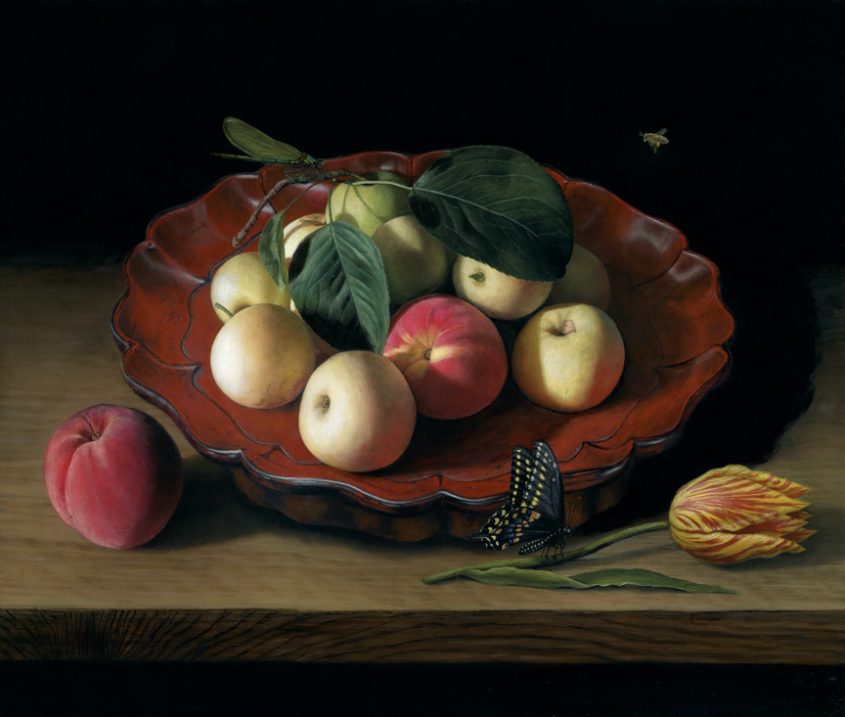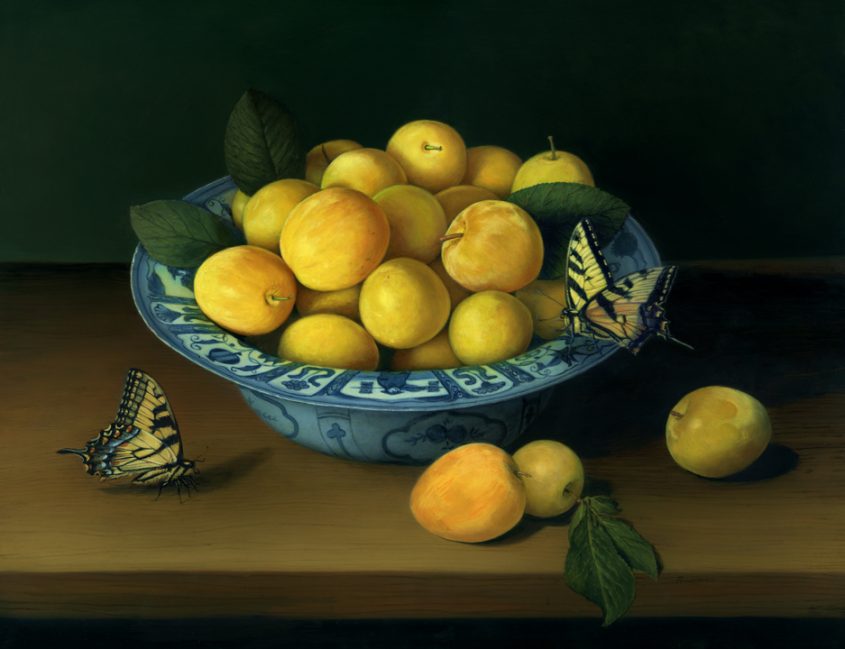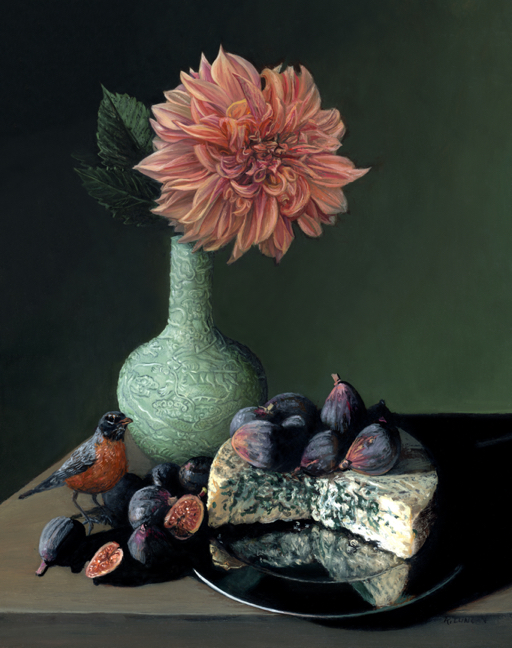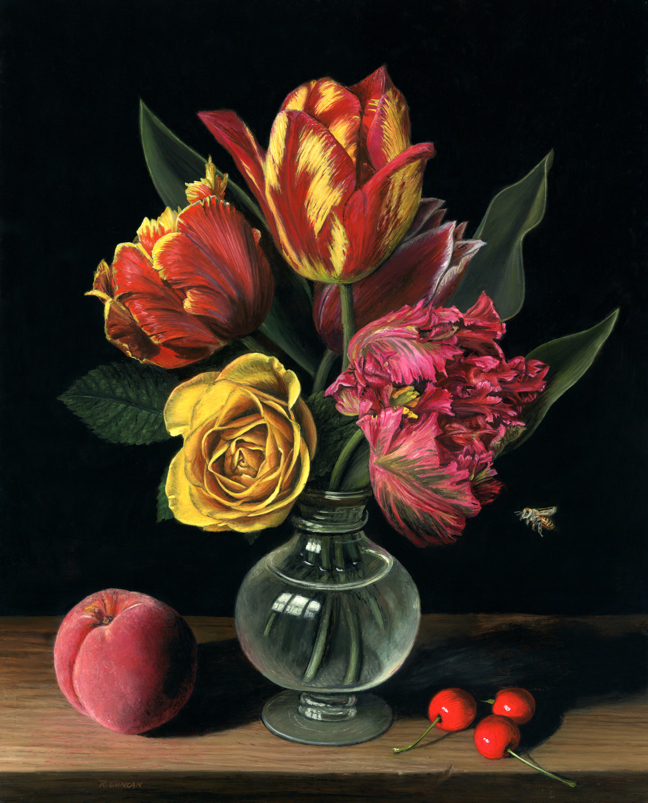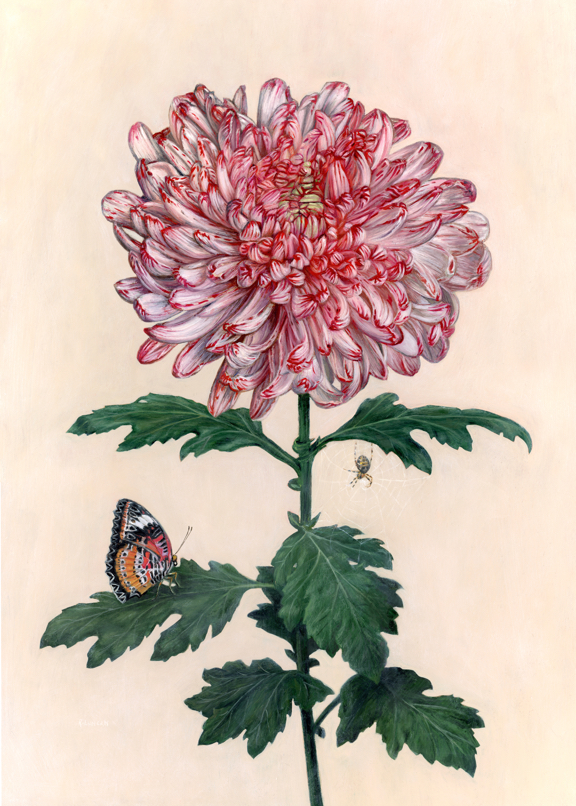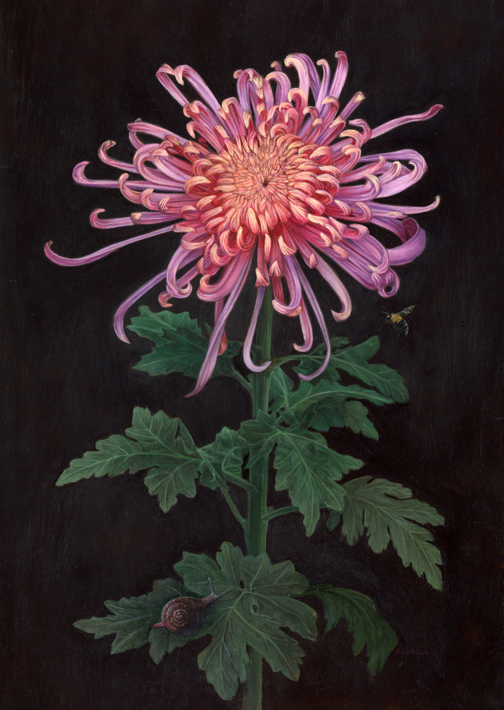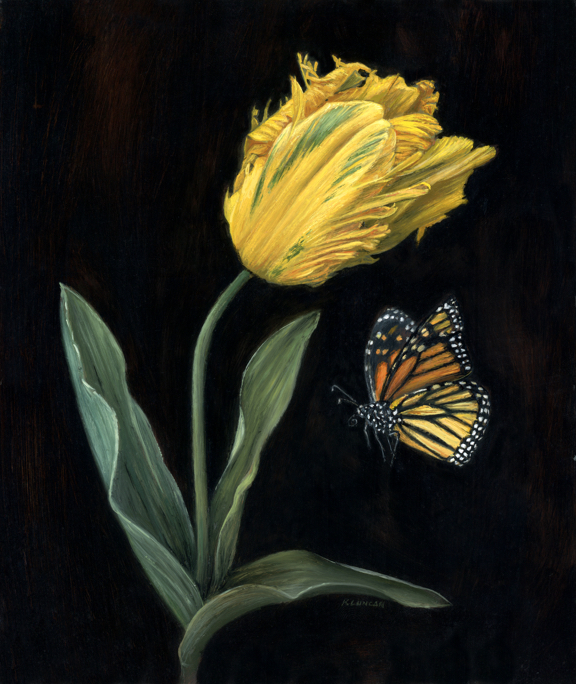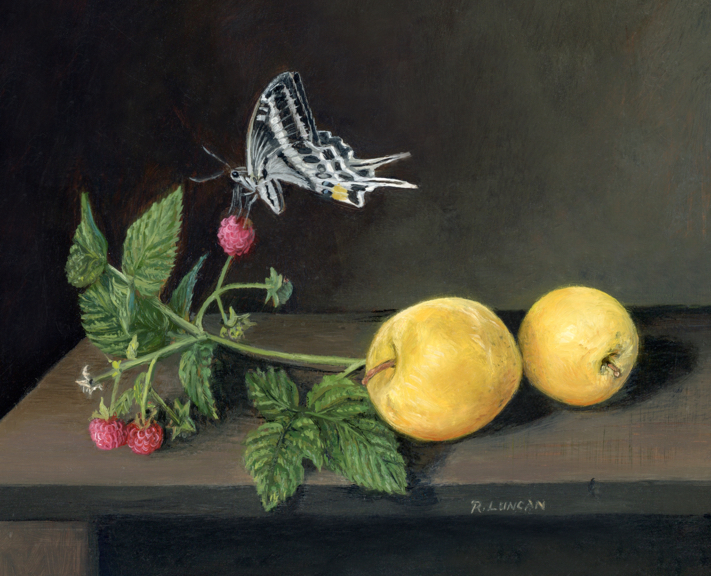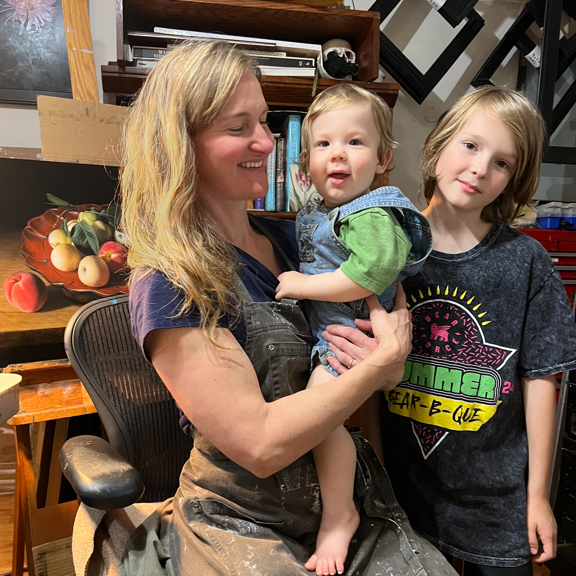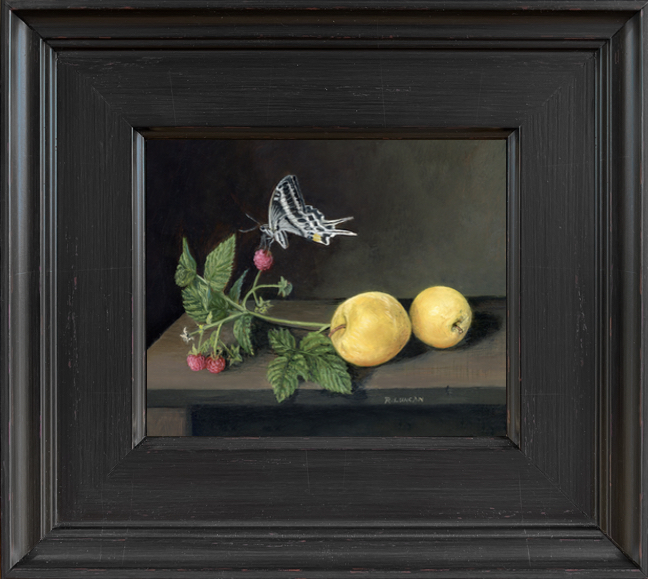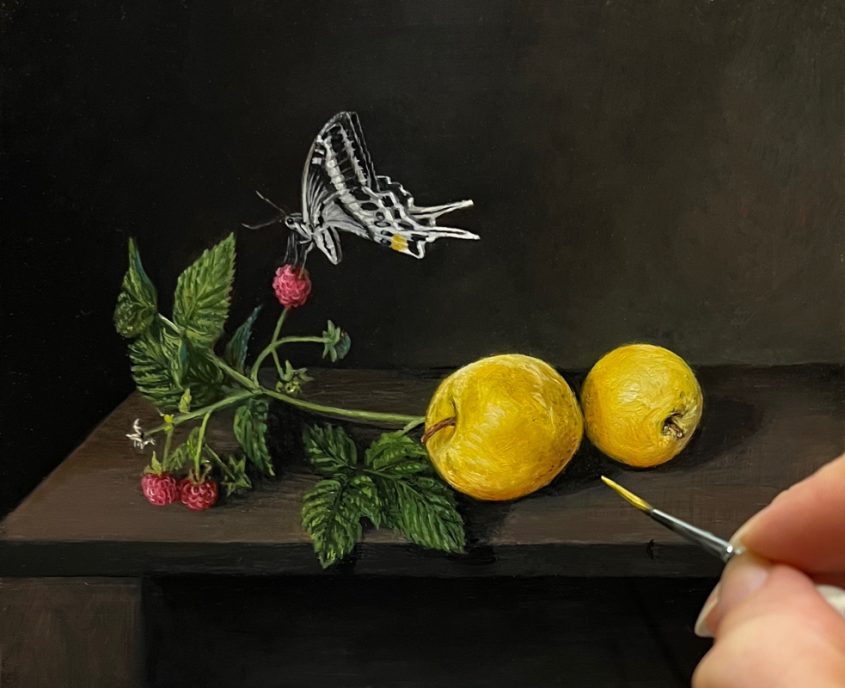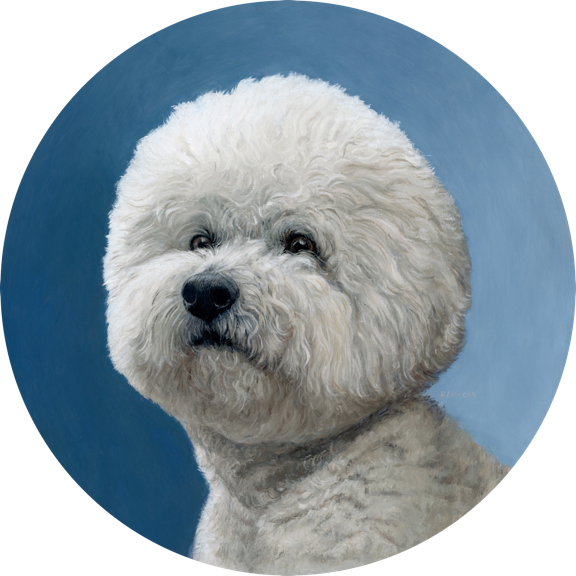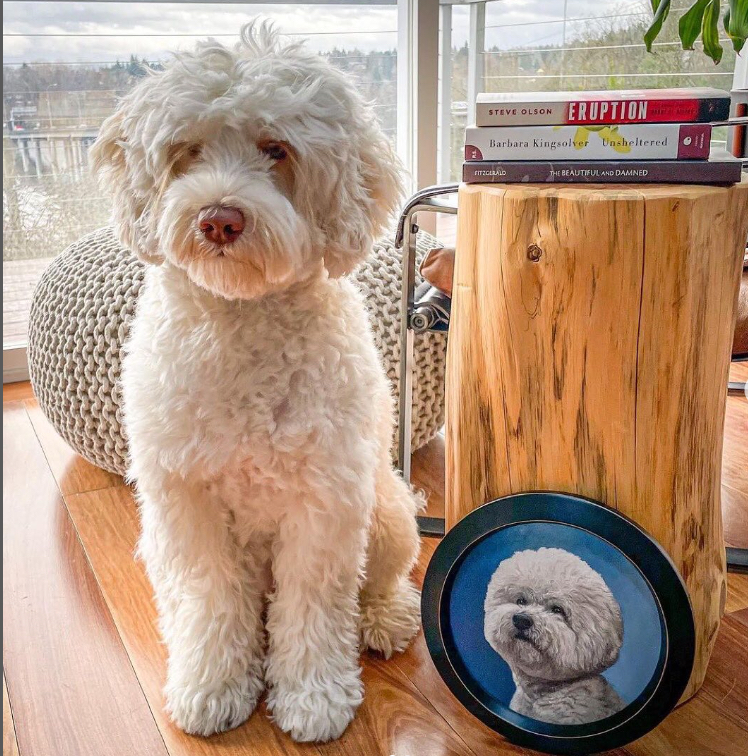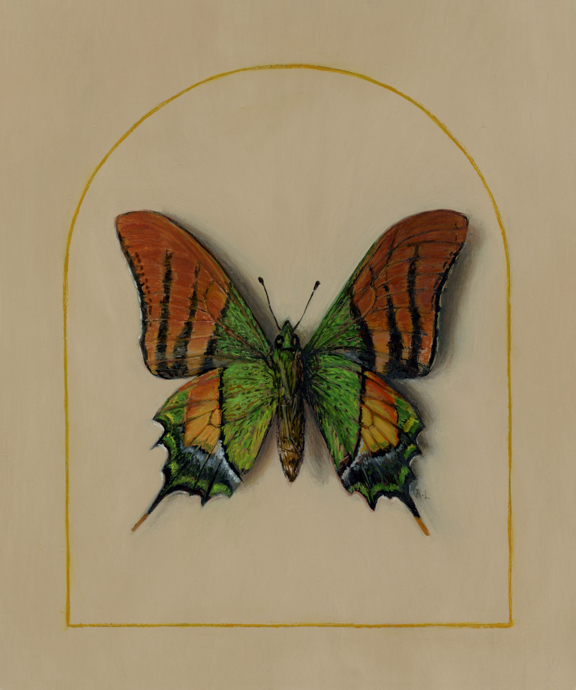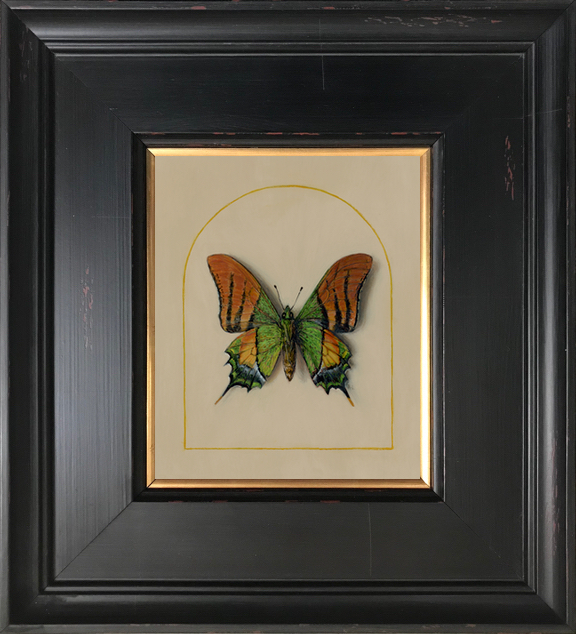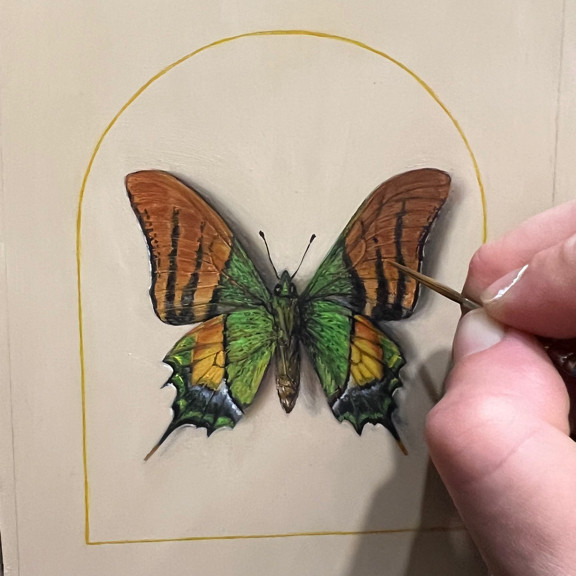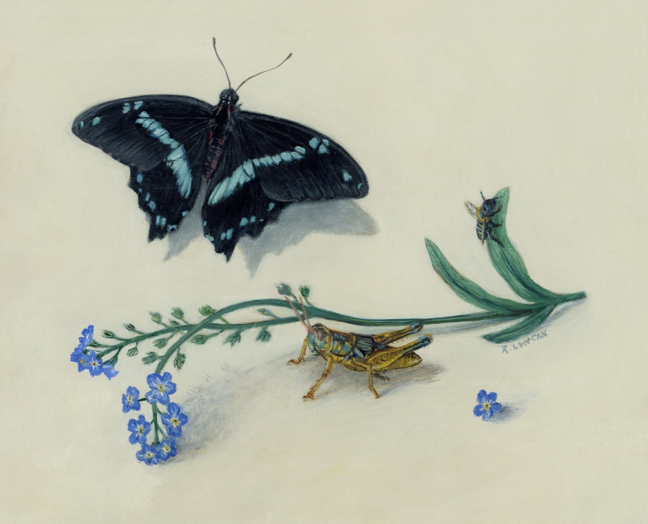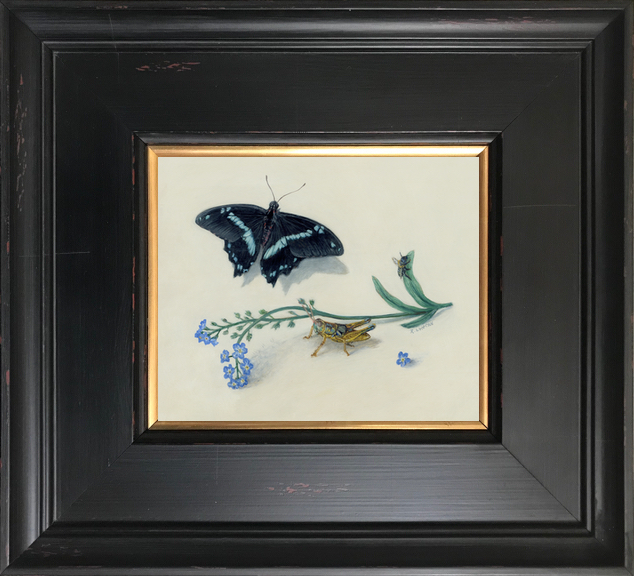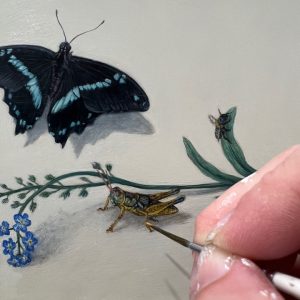As November’s chill settles in and the leaves skitter around outside, I’m bringing a little warmth to the season with a new monthly miniature painting—a composition drawn from memories of summer in the garden.
Sixteen years ago, I transformed our quarter-acre lawn into a terraced garden. It’s become a haven for life— fruit trees, hundreds of flowers, a vegetable patch, dragonflies from nearby Lake Stickney, and a revolving door of pollinators and birds. On any sunny day, it feels like stepping into a living still life.
With such abundance to choose from, selecting elements for this painting was like plucking gems from a tree. I take hundreds of flower photos each season, and my husband and I photograph insects and birds whenever we can. But combining them into a single harmonious composition isn’t always as simple as it sounds.
This painting had been on my mind since May. I sketched dozens of versions—none of them quite right. But as often happens in the creative process, the pieces churned quietly in the background until, months later, everything finally clicked. It’s always a little mysterious—and always a surprise when it happens that way.
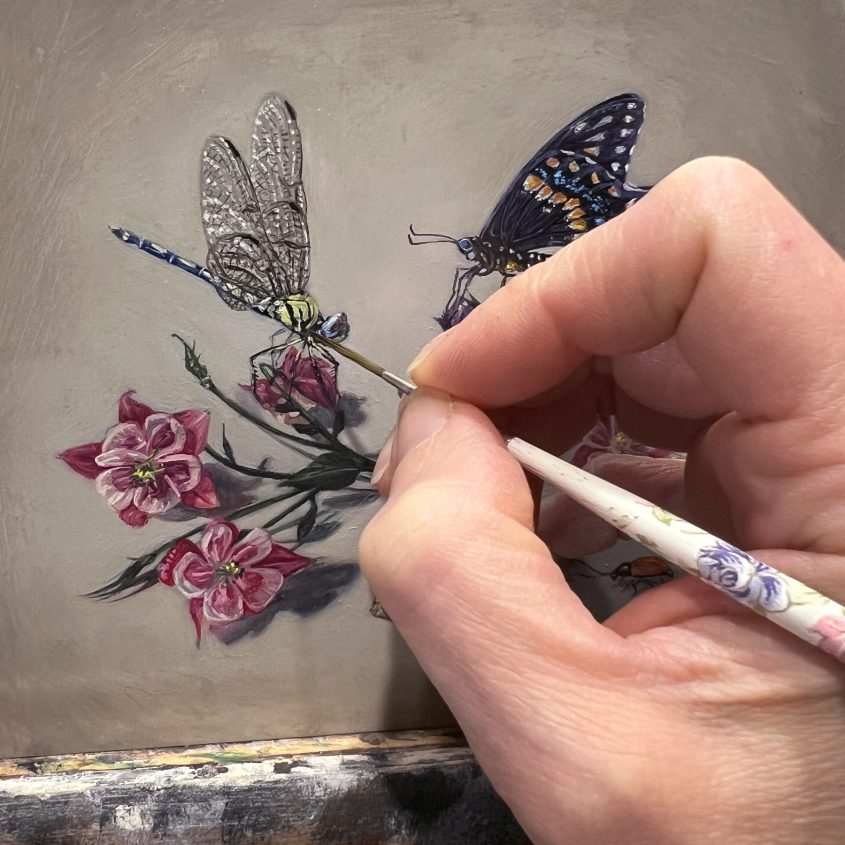
A Conversation with the Past
If you’re a fan of art history, you might see echoes of Jan van Kessel in this piece. His jewel-like insect, shell, and flower studies have long inspired me. There’s even a tiny beetle in my painting copied directly from one of his works. He painted that little fellow more than once, and placing him among my own subjects feels like a quiet conversation across centuries. Art has a beautiful way of collapsing time like that.
The composition may feel like a snapshot of spring, but it’s arriving in November, as I hunker down in my chilly carport-turned-studio, space heater blazing, dreaming of radiant blooms and buzzing wings. One day we’ll get around to insulating the concrete floor. Till then, I have dreams of warmth and one very hot left leg.
As we head into the holidays, I hope this piece brings a little color and warmth your way. May you find joy in small things and inspiration in unexpected places.
Wishing you a cozy Thanksgiving.
